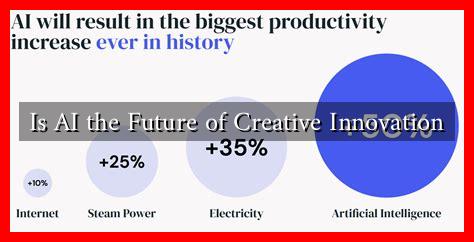-
Table of Contents
Is AI the Future of Creative Innovation?
Artificial Intelligence (AI) has rapidly evolved from a niche technology into a transformative force across various sectors, including healthcare, finance, and entertainment. One of the most intriguing areas where AI is making significant strides is in creative innovation. This article explores the role of AI in creative fields, its potential to enhance human creativity, and the implications for the future of innovation.
The Intersection of AI and Creativity
Traditionally, creativity has been viewed as a uniquely human trait, characterized by the ability to generate novel ideas and solutions. However, AI is challenging this notion by demonstrating its capacity to produce creative works. AI systems, such as OpenAI’s GPT-3 and Google’s DeepDream, have shown that machines can generate text, art, music, and even design products.
How AI Enhances Creative Processes
AI is not merely replacing human creativity; rather, it is augmenting it. Here are several ways AI is enhancing creative processes:
- Idea Generation: AI can analyze vast datasets to identify trends and generate ideas that humans may overlook. For instance, tools like IBM’s Watson can assist writers by suggesting plot twists or character developments based on existing literature.
- Content Creation: AI algorithms can create music, art, and literature. For example, the AI-generated artwork “Edmond de Belamy,” created by the Paris-based art collective Obvious, sold for $432,500 at auction, showcasing the potential of AI in the art world.
- Personalization: AI can tailor creative content to individual preferences. Streaming services like Spotify use AI algorithms to curate personalized playlists, enhancing user engagement.
- Efficiency: AI can automate repetitive tasks, allowing creatives to focus on higher-level thinking. For example, Adobe’s Sensei uses AI to streamline photo editing processes, saving time for photographers and designers.
Case Studies: AI in Action
Several notable case studies illustrate the impact of AI on creative innovation:
- OpenAI’s DALL-E: This AI model generates images from textual descriptions, allowing users to create unique visuals simply by describing them. This tool has opened new avenues for artists and designers, enabling them to visualize concepts that may be difficult to articulate.
- Amper Music: An AI music composition platform that allows users to create original music tracks in minutes. Musicians and content creators can use Amper to generate background scores tailored to their projects without needing extensive musical training.
- Runway ML: This platform empowers creators to use machine learning tools for video editing and visual effects. It democratizes access to advanced technology, enabling filmmakers and content creators to produce high-quality work with ease.
The Challenges and Ethical Considerations
While the integration of AI in creative fields presents exciting opportunities, it also raises several challenges and ethical concerns:
- Authorship and Ownership: Questions arise about who owns the rights to AI-generated content. If an AI creates a piece of art, is it the creator of the AI, the user, or the AI itself that holds the copyright?
- Quality vs. Quantity: While AI can produce content at scale, there is a risk that the quality of creative work may diminish. The human touch often adds depth and emotion that AI may struggle to replicate.
- Job Displacement: As AI tools become more prevalent, there are concerns about job displacement in creative industries. However, many experts argue that AI will create new roles that require human oversight and creativity.
Conclusion: A Collaborative Future
AI is undoubtedly shaping the future of creative innovation. By augmenting human creativity rather than replacing it, AI has the potential to unlock new possibilities and enhance the creative process. As we navigate this evolving landscape, it is crucial to address the ethical considerations and challenges that arise. The future of creativity may not be a battle between humans and machines but rather a collaboration that leverages the strengths of both.
In summary, AI is not just a tool for efficiency; it is a catalyst for innovation that can inspire and empower creators across various fields. As we embrace this technology, we must remain vigilant about its implications and strive for a future where creativity flourishes in harmony with artificial intelligence.
For further reading on the impact of AI on creativity, you can explore resources from Forbes.

